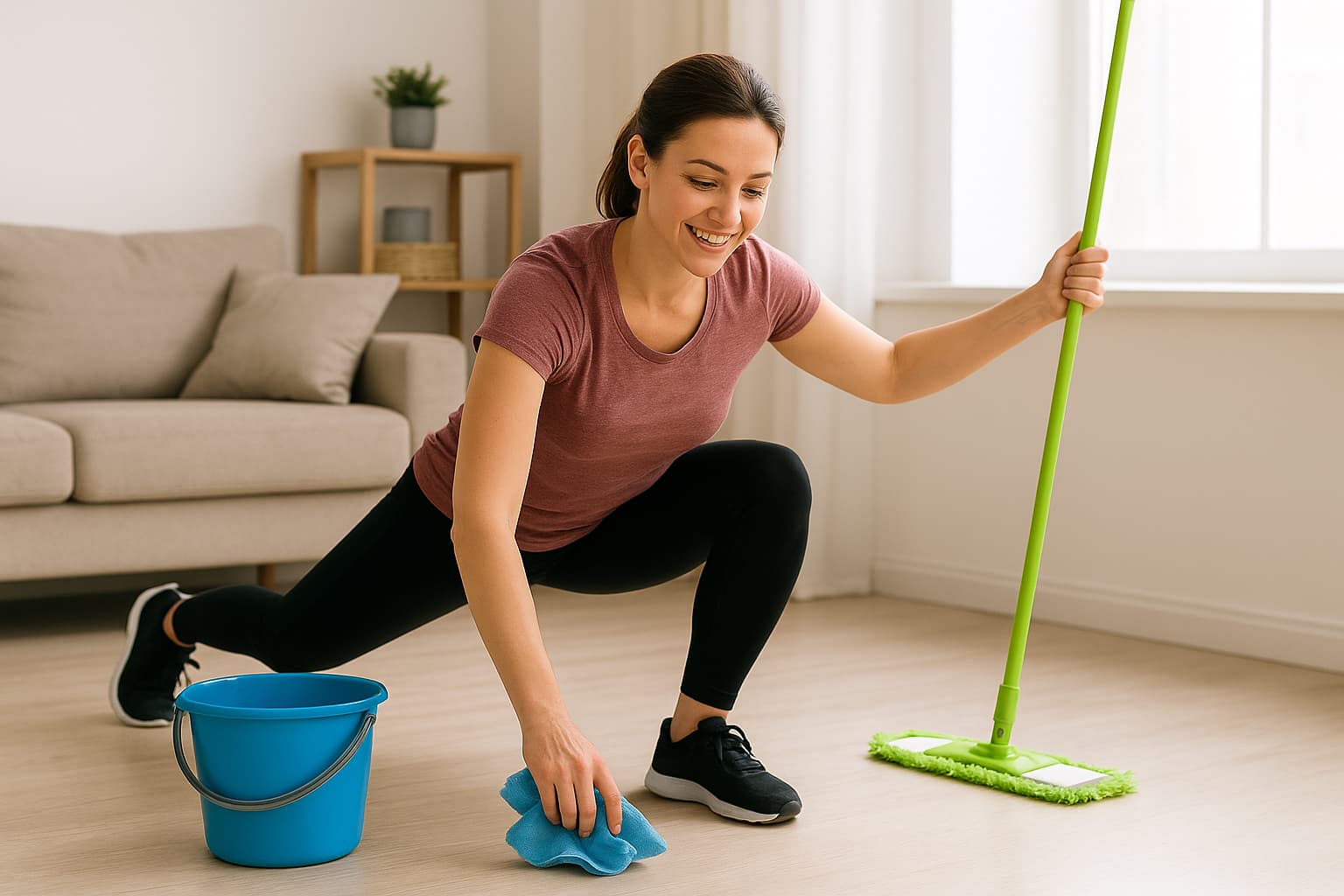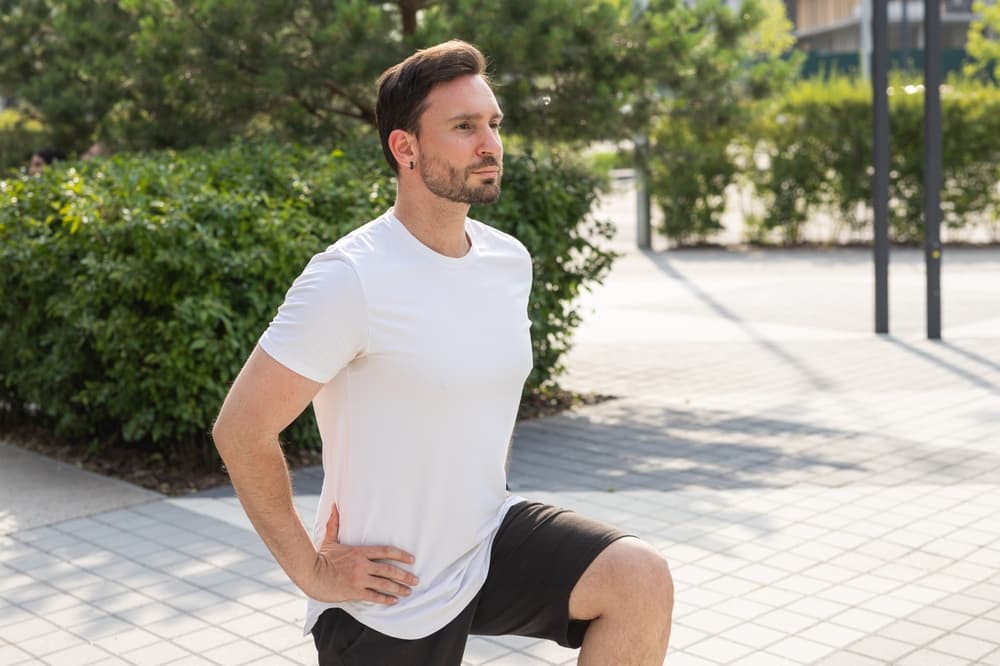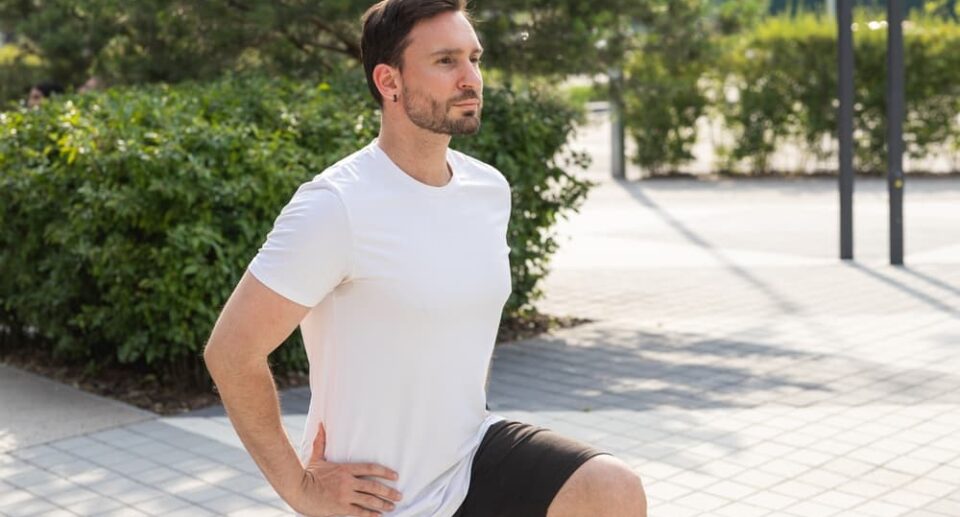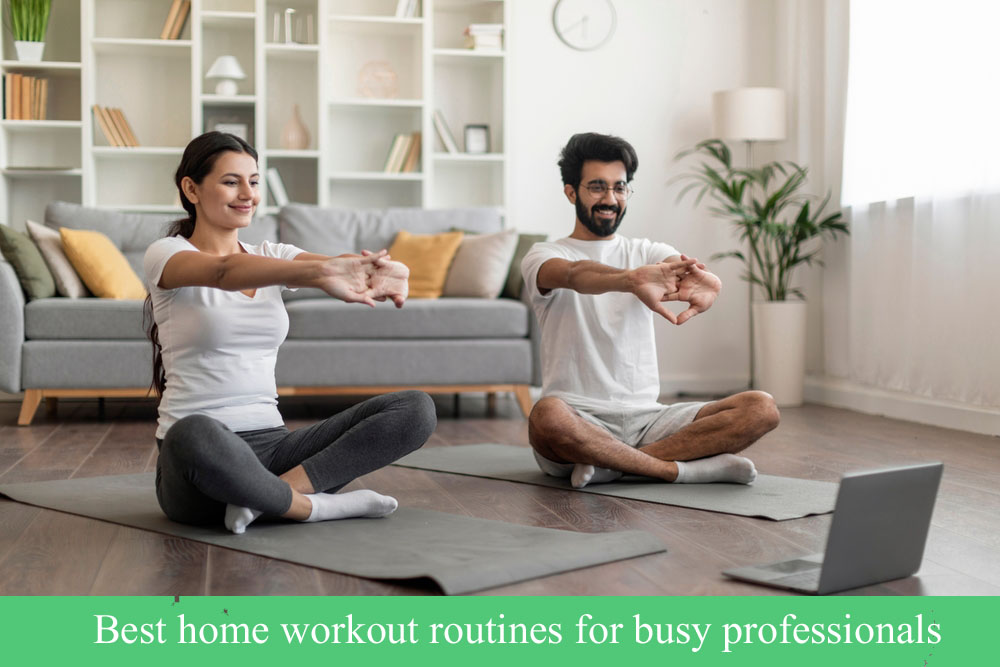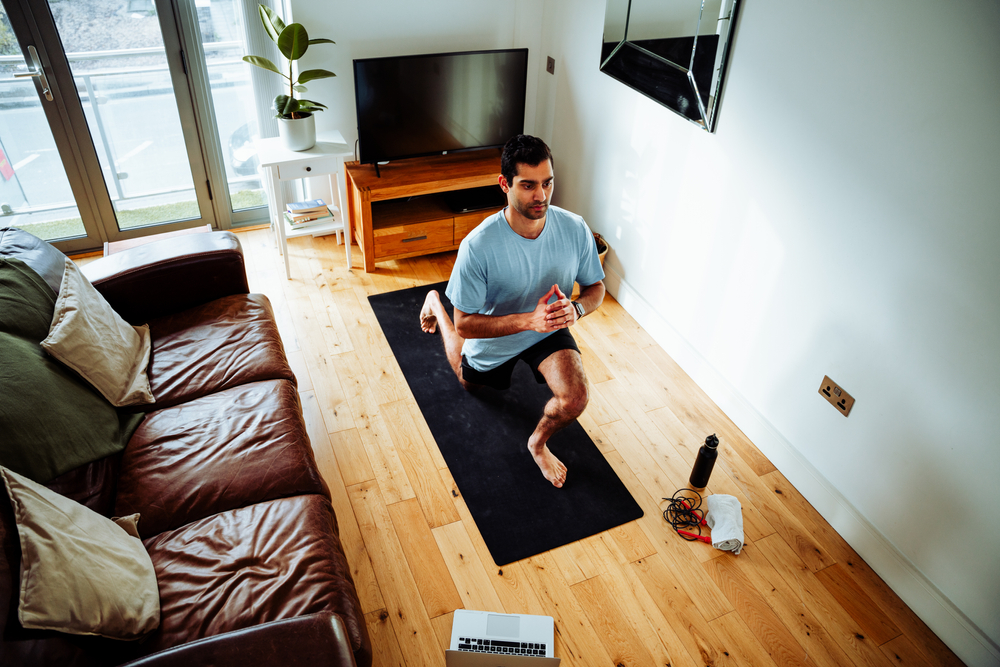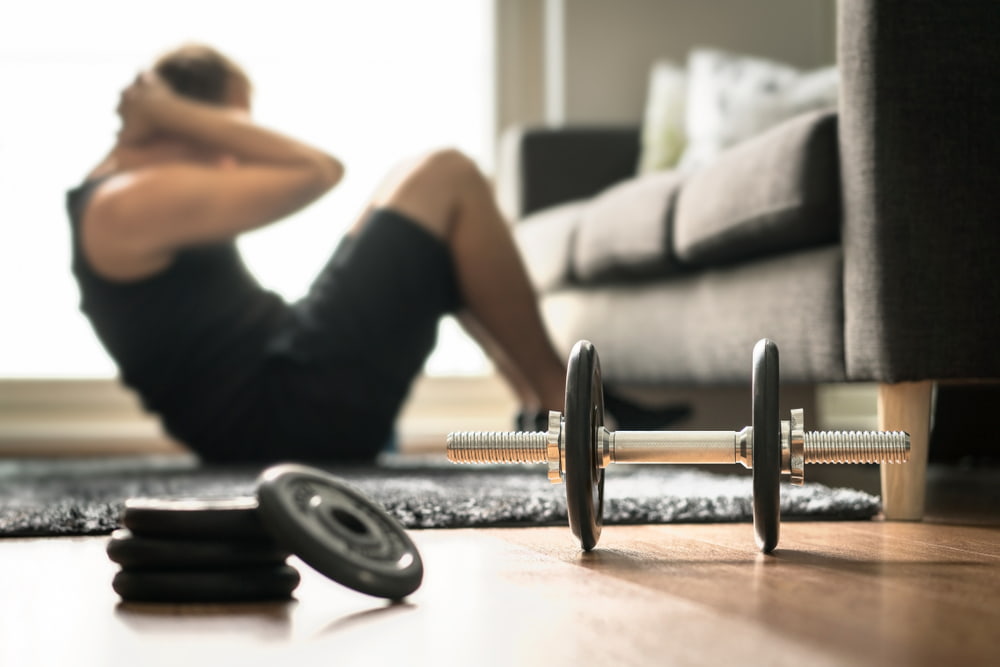How to turn household chores into a workout
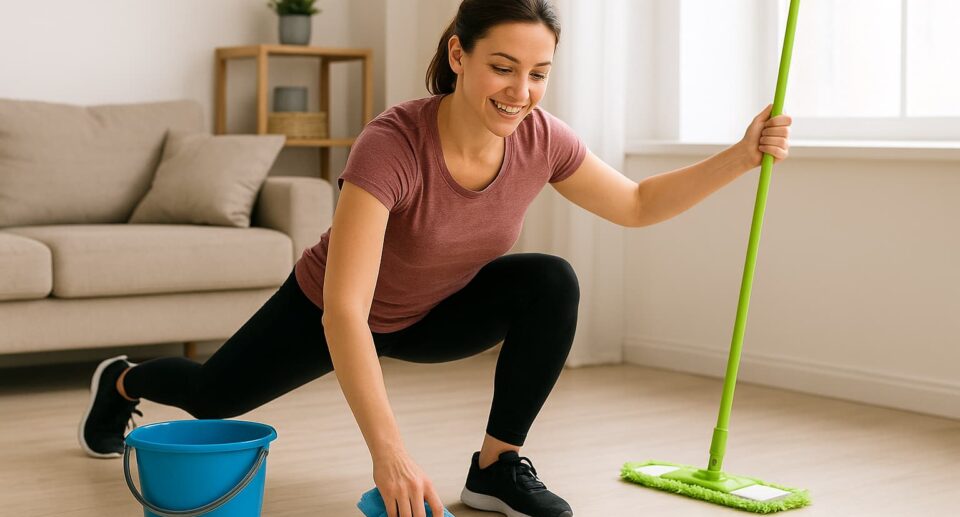

Finding time to exercise regularly is difficult for many people in their busy lives. Between work, family, and daily responsibilities, the thought of going to the gym can be exhausting. But did you know that household chores can be a great workout?
Mopping the floor, doing laundry, sweeping, or cooking are not just household chores; they are also natural ways to exercise. These tasks increase your heart rate, keep your muscles active, and burn calories, just like you are working out at the gym at home.
With a bit of awareness and maintaining proper posture, even simple daily tasks can become part of your home workout routine. So today, learn how to “turn household chores into a workout,” that is, take care of your fitness while doing household chores, without any extra time or equipment.
A news report from Harvard Medical School says that “housework” can be part of an active life and may help reduce mortality risk.
Workout techniques among familiar tasks
Vacuuming and mopping
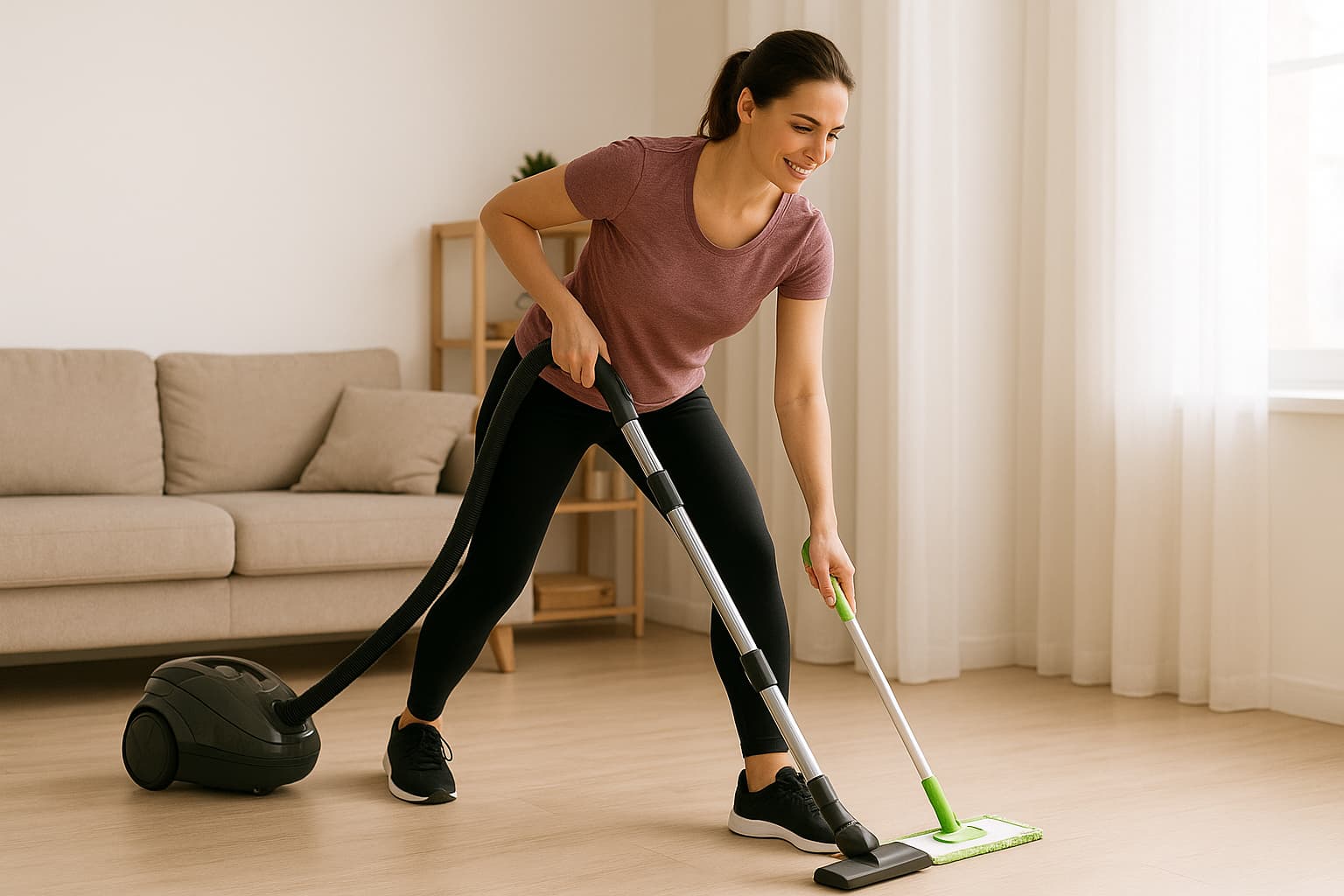

Adopting techniques while vacuuming or mopping the floor can become a cardio and leg workout.
Vacuuming with Lunges: Take long strides while pushing the vacuum cleaner forward and do a lunge with each forward stroke. Keep your back straight as you lunge, and make sure your knees are bent at 90 degrees. Switch hands after using one hand to ensure both arms are working. This technique will target your legs (quadriceps and hamstrings) and your buttocks (glutes).
Mopping in a squat: Instead of just leaning forward and using your hands, maintain a slight squat by bending your knees as you clean the floor. This position will put stress on your leg and hip muscles, making it an effective lower-body workout.
Increase the intensity: speed up your mopping or vacuuming. Working at a steady, fast pace will increase your heart rate, making it a good cardiovascular workout.
Scrubbing and cleaning floors
Heavy-duty tasks like scrubbing floors or bathrooms are significant for your core and upper body muscles.
Scrubbing in a plank position: While scrubbing, keep your body weight forward rather than resting on your knees, which is similar to the plank position or the push-up starting position. This will put extra stress on your core and shoulders, strengthening your muscles.
Time-based intensity: Use your work time as workout intervals. For example, scrub at a fast and intense pace for 45 seconds, then rest at a light pace for 15 seconds. This will help build endurance.
Wiping windows, countertops, and walls
This type of work is excellent for your arm and shoulder muscles.
Wiping in circular motions: When wiping windows or other large surfaces, use large, circular or up-and-down motions rather than short, fast ones. Extend your arms wide to stretch your shoulder and arm muscles. Work one arm until it is tired, then switch to the other. This will target your biceps, triceps, and shoulder muscles.
Adding Stretching: Instead of using a tool or a chair to reach high places, stretch your body using your legs and core. This will increase your flexibility.
Laundry and Heavy Lifting
Doing laundry or lifting heavy objects properly can be a powerful workout for your legs and core muscles.
Lifting with Proper Squat Form: When lifting a laundry basket, a pile of clean clothes, or any other heavy object from the floor, squat with your back straight and bend your knees. Never bend at the waist and lean forward to lift, as this can cause back pain. Always use your strong leg muscles when lifting.
Standing Folding Clothes: When folding clothes, stand rather than sit in a chair. Do heel raises occasionally. This will tone the calf muscles on the back of the legs.
Use the stairs: When carrying laundry or other items up and down multiple floors in a house with stairs, make numerous trips instead of carrying all the heavy items at once. This will be an effective cardio and leg workout by going up and down the stairs.
Learn More: Maintain an Active Lifestyle Without a Gym
Cooking and other daily tasks
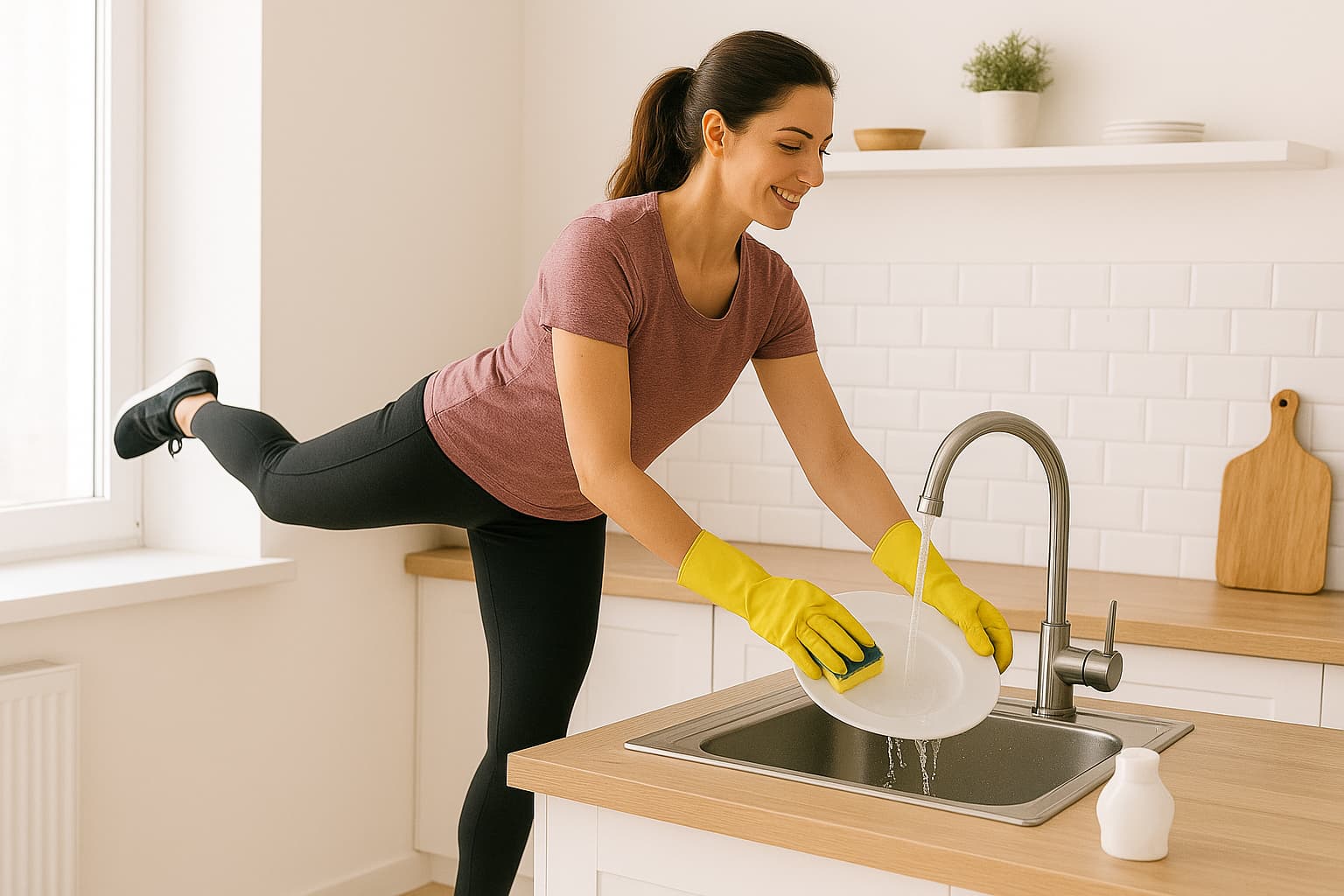

You can also turn standing time into a workout.
Exercise during cooking breaks: Use the time you wait for something to heat up or boil. Do light push-ups with your hands on the kitchen countertop, or try a plank position.
Balance while washing dishes: While washing dishes, stand on one leg and slowly lift your leg to the side or back with the other leg. This will help you strengthen your balance and hip muscles.
Techniques for Adding Extra Intensity
Time-Based Techniques
These techniques will help you increase your heart rate and burn calories faster:
Interval Training: This is changing the intensity of your work for a set period of time.
Example: Work very hard and fast for 45 seconds (e.g., scrubbing or mopping vigorously). Then do 15 seconds of relatively light work (such as slowly putting things away). Repeat this cycle throughout your workout.
Timed Race: Set a time limit for a specific task, such as cleaning a room as quickly as possible or picking up dirty clothes from the house and putting them in the washing machine, and try to complete the task within that time. Maintaining a fast pace will increase the intensity of your workout.
Non-Stop Movement: Avoid taking unnecessary breaks while working. Go from one task to another without stopping, such as vacuuming and quickly folding clothes.
Physical Techniques
Increase the intensity by changing the way you use your body parts while working:
Large or extended movements: Instead of making small movements, use your arms or legs as far apart as possible while working. For example: When wiping windows, use your entire arm and wipe in as long a stroke as possible.
Double effort: Do the same task using two arms or two legs. For example: Use both hands when picking things up from the ground, or use your whole body strength when wiping.
Weightlifting: If you have no health problems, divide the weight and climb stairs several times instead of carrying laundry baskets or shopping bags at once. This extra weight will act as a small weight training.
Keeping muscles tight: Always keep your stomach pulled in or your core tight while working. This will protect your spine and put extra stress on your abdominal muscles.
Environmental Strategies
Create a workout mood by changing your work environment and mindset:
Use of Music: Work with fast-paced or favorite music. You will be encouraged to move quickly or dance to the beat of the song (like Dish Dancer).
Clothing and Shoes: Wear comfortable trousers or workout clothes and sports shoes with good grip when cleaning the house. This will make it easier to lunge or squat and reduce the risk of accidents.
Conscious Movement: Ensure each movement serves the purpose of the exercise. Work not just to finish the task, but also to pay attention to whether the muscles are tense.
Benefits and Precautions of Exercise
Calorie Burning and Weight Management: Activities like mopping, scrubbing, or gardening at a fast pace burn a significant amount of calories. When you add extra intensity to these activities (such as lunges or squats), the calorie burn increases further, helping you lose or maintain a healthy weight.
Improves cardiovascular health: The habit of working at a high pace continuously increases your heart rate. Regularly increasing your heart rate strengthens your cardiovascular system, improving the performance of your heart and lungs.
Builds muscle and strength: Doing heavy lifting (like carrying a laundry basket), or doing squats and lunges to clean the floor effectively strengthens your arms, shoulders, core (abdominal muscles), and leg muscles.
Saves time and multitasks: This technique lets you do two important tasks at once —cleaning your house and exercising. This dramatically reduces the need to set aside time for a separate gym or workout.
Mental well-being: Any physical activity releases “feel-good” hormones called endorphins, which help reduce stress, fatigue, and anxiety and refresh the mind. A clean, tidy environment also promotes mental peace.
Flexibility and Balance: Stretching to reach higher places or working while balancing while wiping can naturally improve the body’s flexibility and balance.
Precautions and Safety
To avoid injuries or accidents and to get the full benefits of exercise, it is essential to follow some necessary safety measures and precautions:
Proper form
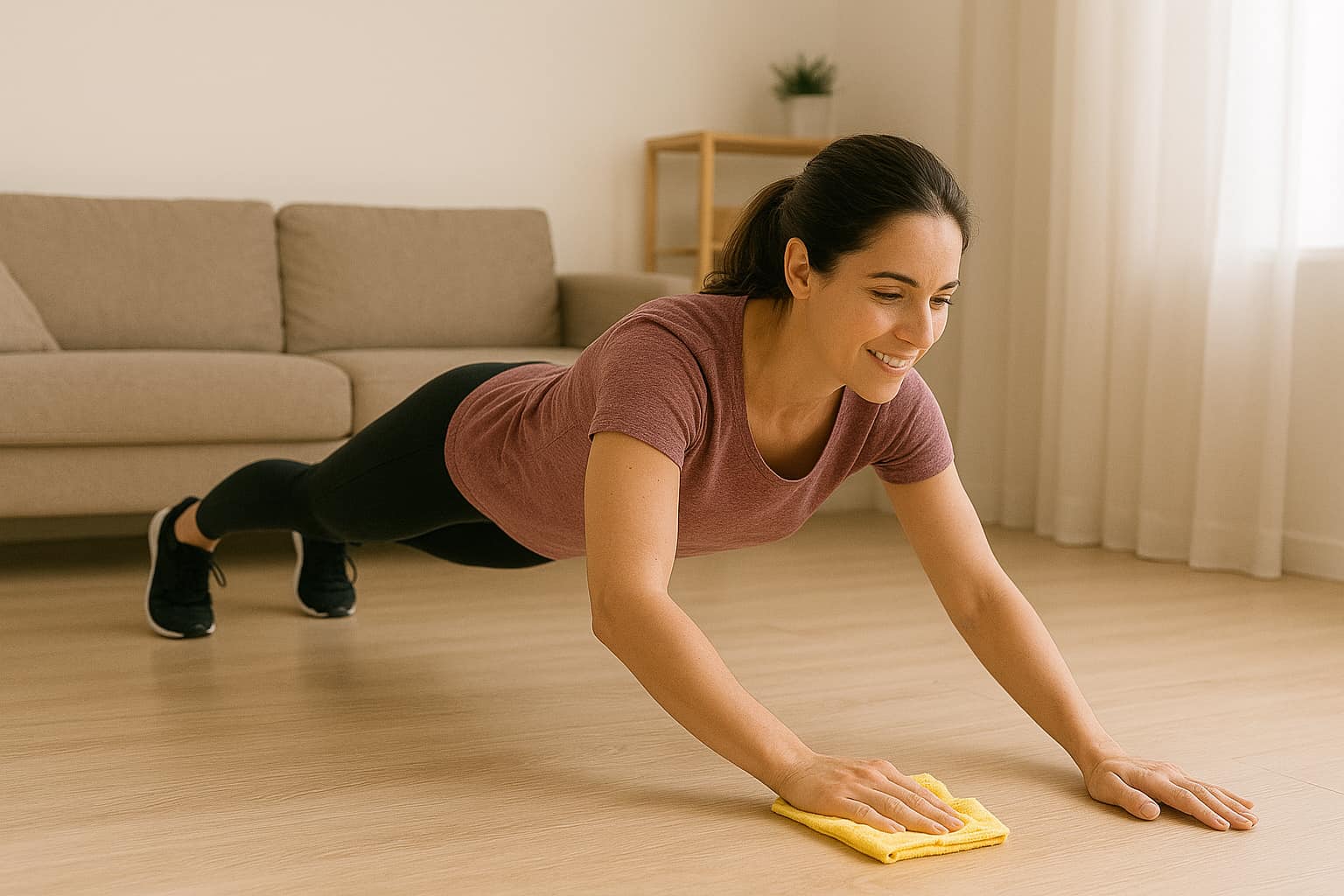

Back protection: Never bend forward at the waist when lifting from the floor or scrubbing. Always stay in a squatting position with your knees bent and your back straight. This will keep your spine safe.
Core muscle use: Keep your abdominal muscles tight while doing any heavy or intense work. This will reduce unnecessary stress on your lower back and improve the function of your core muscles.
Warm-up and cool-down
Warm-up: Do five minutes of light stretching, brisk walking, or arm and leg rotation before starting work. This will prepare the muscles and reduce the risk of sudden injury.
Cool down: Cool down the muscles lightly for a few minutes after finishing work.
Rest and stay hydrated
Adequate rest: Take short breaks from long periods of work. Avoid overexerting any particular muscle.
Drink water: If you sweat while working, it is essential to stay hydrated by drinking water regularly.
Environmental measures for safety
Use of shoes: The floor can be slippery when mopping or cleaning with water. So wear shoes or sneakers with a good grip at this time to prevent slipping or falling.
Body boundaries: If you feel pain or discomfort in your muscles while working, stop immediately or reduce the intensity. Avoid pushing your body beyond its tolerance.
Create a daily routine
Morning routine
Making the bed: When making the bed or putting up and taking down the blankets, use the side-bending technique of the ribs and stretch the body. Do this for about 5 minutes.
Washing the kitchen counter: When washing dishes or wiping the kitchen counter, instead of standing still in one place, do leg lifts or raise and lower your heels. This will activate your balance and leg muscles. Allow 10 to 15 minutes for this.
Evening routine
Putting things together: When picking up children’s toys or other items from the floor, bend your knees and squat down. This will exercise your legs and hips. Allow 5 to 10 minutes for this task.
Light sweeping/vacuuming: Move at a fast pace or add lunges occasionally. Allow 10 minutes for this.
Total Active Time: These small tasks add about 30-40 minutes of extra active time each day.
Weekly Routine: Main Workout Focus
Choose big tasks on different days of the week and focus on them with specific workout techniques.
Saturday and Sunday: Floor Cleaning treat these days like high-intensity interval training. Mop or scrub for 45 seconds, then light mop or rest for the next 15 seconds. This routine will strengthen your core, legs, and cardiovascular system.
Monday: Laundry Day: Use heavy tasks. Use proper squat form when lifting a laundry basket. If you have stairs, instead of lifting all the clothes at once, divide the weight and do several quick up-and-downs, which will give you a good leg workout.
Tuesday: Garden/Balcony Cleaning: This task requires a lot of standing and sitting. Use a squat position when getting up and down, and a lunge position when pulling weeds. This will put pressure on your legs and core muscles.
Wednesday: Scrubbing the kitchen and bathroom: This is good for your upper body and core. While scrubbing, do plank positions or light push-ups with your hands on the countertop. You can use these techniques during cooking breaks.
Thursday: Wiping windows, doors, and walls: This will stretch your arm and shoulder muscles. Use a large-arm rotation technique when wiping windows, and use toe raises to reach high places.
Friday: Deep cleaning and rearranging: This is the day to move or do deep cleaning. Use proper lifting techniques when moving furniture, and vacuum at a high intensity for 15 minutes straight to keep your whole body active and increase endurance.
Learn More: Best Weekly Workout Schedule for Balanced Fitness
Tips to remember for creating a routine
Use a timer: Set a specific time limit for each task and try to complete it within that time at a brisk pace.
Awareness: Instead of just thinking about finishing the task, maintain the idea that you are consciously using your muscles to exercise.
Flexibility: If the big tasks in your weekly routine are not possible, try to stay active by doing at least 10 minutes of brisk walking or squatting.
Tracking: Writing down how many minutes you were active or how many times you squatted will help you stay motivated.
FAQ
Q 1: Can household chores really count as a workout?
Yes! Household chores like sweeping, mopping, gardening, and cooking involve continuous movement that raises your heart rate, strengthens muscles, and burns calories just like a light workout.
Q 2: How many calories can I burn doing household chores?
Depending on the activity and intensity, you can burn between 150-300 calories per hour doing chores such as cleaning, vacuuming, or washing clothes making them great for staying active at home.
A few words from CoreWellfit
Housework may seem like a boring part of your daily routine, but with a little strategy and awareness, it can become an essential part of your fitness routine. We saw how simple tasks like mopping, vacuuming, or doing laundry can be transformed into an effective full-body workout with lunges, squats, or interval training.
This technique not only helps you burn calories and strengthen muscles, but also saves you time and reduces stress, thereby helping you maintain a clean, healthy lifestyle. Remember, the key to working out at home is ‘proper form and consistency’. Always work with your back straight and core engaged, avoid injuries, and add a little extra intensity to your daily routine.
Joseph Andrew is a health and fitness writer at CoreWellFit, dedicated to making fitness simple, effective, and accessible for everyone. He specializes in home workout strategies, strength training, and wellness guidance, with a focus on practical tips that fit into busy lifestyles. Joseph also reviews fitness products and training gear, helping readers make informed choices that support their goals.



